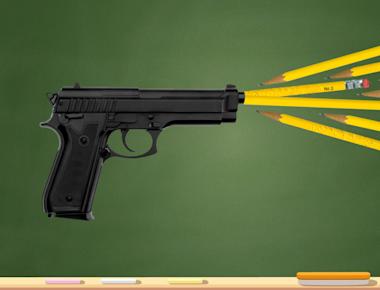

The Rwandan Genocide that took place in 1994 has changed the world we live in today. By the early 1990s, Rwanda, a small country with an overwhelmingly agricultural economy, had one of the highest population densities in Africa. The majority of its population was Hutu; the rest were Tutsi, along with a small number of Twa (a Pygmy group who were the original inhabitants of Rwanda).
Part of German East Africa from 1897 to 1918, Rwanda became a Belgium trusteeship under a League of Nations mandate after World War I, along with neighboring Burundi. Rwanda’s colonial period, during which the Belgians favored the minority Tutsis over the Hutus, exacerbated the tendency of the few to oppress the many, creating a legacy of tension that exploded into violence even before Rwanda gained its independence. The same three groups were the ones who set off this fire of chaos and hatred. Exactly 26 years ago, the once beautiful country of Rwanda had been ruined in a short one hundred days, as thousands of Hutu, Tutsi, and Twa were lost in a land that had been devoured by violence.
Everything seemed fine for a long time until it was revealed that the Hutu had been planning to overtake the Tutsi. The United Nations decided to send 2,500 multinational soldiers to Rwanda to maintain peace between the two groups before the minor conflict turned into a full-fledged war. Thousands of Tutsis were being massacred; thus, the U.N. Security Council voted unanimously to abandon Rwanda and its people. The remainder of the troops were pulled out of the mission, leaving behind only 200 soldiers to cover for the entire country. Hutu extremists violently opposed sharing any power since they desired nothing less than the extermination of the Tutsis. They had even drawn up lists of politicians to kill, and these “death lists” made the Tutsi flee to another area. Over 200,000 Tutsis dispersed to neighboring countries and formed a rebel guerrilla army, the Rwandan Patriotic Front.
In 1990, this rebel army invaded Rwanda and forced Hutu President Juvenal Habyarimana into signing an accord that mandated that the Hutus and Tutsis would share power. Sometime after, the Tutsi had launched an attack against the Hutu leaders of Burundi and Rwanda at the same time.
On April 6, 1994, a plane carrying President Habyarimana was shot down. Violence exploded immediately after. Under the cover of war, Hutu extremists launched their plans to destroy the entire Tutsi population. Political leaders who might have been able to take charge of the situation and other high-profile opponents of the Hutu extremist plans were killed. Entire Tutsi families were killed at a time. Because of the multiple killings, individuals in Rwanda were now required to carry identification cards specifying their ethnic background. These small cards now marked the difference between being dead or alive.
During this time, other international entities were aware of the event happening, yet they decided to stand back. In fact, officials at the U.S. embassy in Kampala were fully aware that some weapons were crossing the border. The CIA also knew that the group of rebels’ growing military strength escalated several ethnic tensions within Rwanda to such a large degree. This is why genocide keeps happening. Other international leaders feel that involvement threatens their statuses. Genocide is enabled by the silence of a community. Since nobody is bold enough to stand up against these attacks, they continue to happen repeatedly.
However, there is a solution. When the U.N. passed the Genocide Convention in 1948, the world said, ‘Never again.’ But the history of the twentieth century has proved that ‘never again’ became ‘once again.’ Studying genocide is not enough. It is essential to create international institutions and political will to prevent it. A few extra troops might have been the deciding factor that could have saved 800,000 people.
In essence, Rwanda’s people, who once lived peacefully, took on a series of attacks, and it harmed them severely. The Hutu and the Tutsi caused one of the most significant conflicts in time. What came from a small power struggle had turned into a massive war. It caused innocent leaders and families to die and turned people against each other. Around one million people were killed as families were torn apart. During this time, other countries did not bother to help the Rwandans through their tough times. This contributed to the impact the genocide had on the people. From this point forwards, rather than just sitting back, we as a country need to step up and make sure something as wrong as the Rwandan genocide never happens again in the future. The world’s safety is in our hands, and the decisions we choose to make can affect us all.
Sources
BBC. (2019, April 4). Rwanda genocide: 100 days of slaughter. BBC News. http://www.bbc.com/news/world-africa-26875506.
Epstein, H. (2017, September 12). America’s secret role in the Rwandan genocide. The Guardian. http://www.theguardian.com/news/2017/sep/12/americas-secret-role-in-the-rwandan-genocide.
The History Place - Genocide in the 20th Century: Rwanda 1994. (n.d.). http://www.historyplace.com/worldhistory/genocide/rwanda.htm.
History.com Editors. (2009, October 14). Rwandan Genocide. History.com. http://www.history.com/topics/africa/rwandan-genocide#section_2.
May 1, 2015. (2015, June 12). Here’s Why Genocide Keeps Happening: Up For Discussion. Zócalo Public Square. http://www.zocalopublicsquare.org/2015/05/01/heres-why-genocide-keeps-happening/ideas/up-for-discussion.
Stanton, G. (2003, June 9). Commentary: How We Can Prevent Genocide. http://www.hawaii.edu/powerkills/COMM.6.24.03.HTM.
Subscribe to our newsletter!
Quick Links
Legal Stuff



